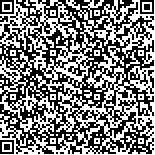下载中心
优秀审稿专家
优秀论文
相关链接
摘要

针对高分一号卫星(GF-1)的16 m宽覆盖相机数据,探讨了暗目标法的应用。首先,利用地面观测的植被光谱数据,结合模拟计算,发现利用红蓝波段线性关系能更好地去除地表影响,而利用反演的气溶胶光学厚度AOD进行大气校正能很好地去除伪暗目标;然后,以天津地区和北京地区为试验区进行了反演试验。结果表明,利用本算法能较好地观测气溶胶分布,与地面观测结果均有较好的相关性(R>0.8),但反演结果整体偏高,可能是云像元的影响。误差分析表明,整景图像采用统一的观测天顶角会带来较大误差,最大误差为0.3;绝对辐射定标精度在3%以下,反演精度能控制在10%,城市型气溶胶会对反演带来较大误差。
As a newly launched earth observing satellite of China, the GF-1 satellite is intended to be applied for land resource, agriculture, and environment protection. This satellite contains four wide field viewing cameras that have a spatial resolution of 16 m at nadir. For the application of 16 m cameras, the aerosol monitoring research need to be processed as soon as possible. This study investigated the application of dark dense vegetation to the 16 m camera of GF-1.
First, blue-only algorithm was compared with blue and red algorithm with simulation retrieval based on the ground-based measurements of the typical vegetation surface spectrum. A linear relationship exists between blue and red vegetation surfaces. Thus, compared with the blue-only algorithm, the blue and red algorithm can remove land surface influence better from the top of the atmosphere reflectance. During retrieval, atmosphere correction needs to be performed to remove false dark targets, which are caused by the decrease of Normalized Difference Vegetation Index with the increase of Aerosol Optical Depth (AOD).
Tianjin, which is located in the north of China, was selected as the area of the retrieval experiment, which was conducted from August 2013 to October 2013. The result shows that aerosol distribution can be monitored efficiently by using GF-1 16 m cameras. However, the result is partly affected by cloud and haze, which restrict the capability of these cameras. The algorithm is validated by ground-based measurements of a handheld sun photometer in the west of Tianjin and the Beijing site of AERONET. Satellite-retrieved measurements demonstrate good agreement with ground-based measurements, and the correlation coefficient is greater than 0.8.
Error analysis shows that: (1) If the viewing zenith angles of the entire image are set to the same value, the retrieved AOD error can be maximized to 0.3; (2) Calibration accuracy influences retrieved accuracy, and when the calibration error is lower than 3%, the retrieved error is lower than 10%; (3) Urban aerosol can cause a large retrieval error.

